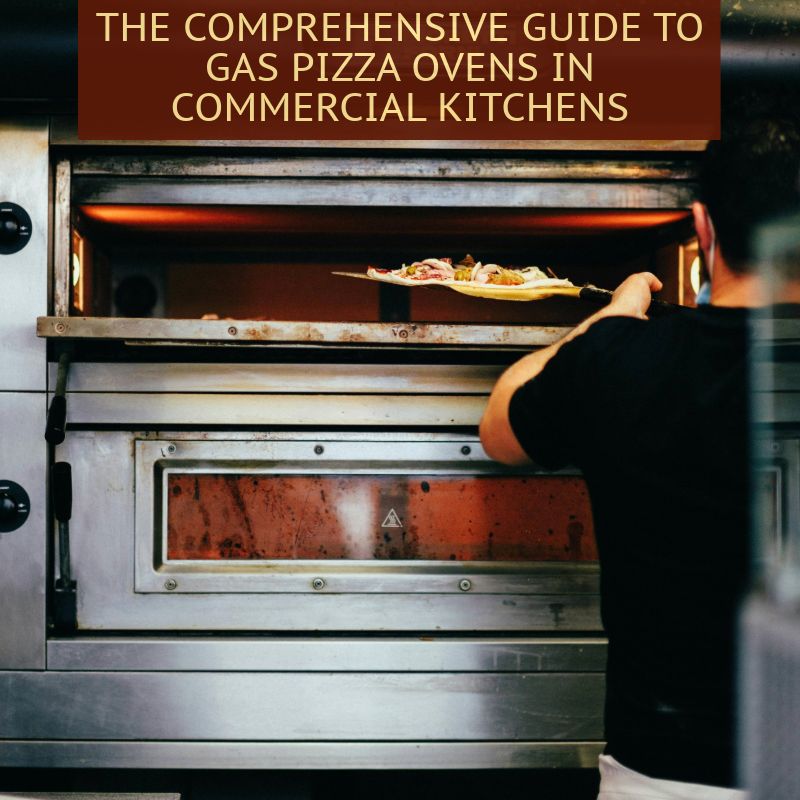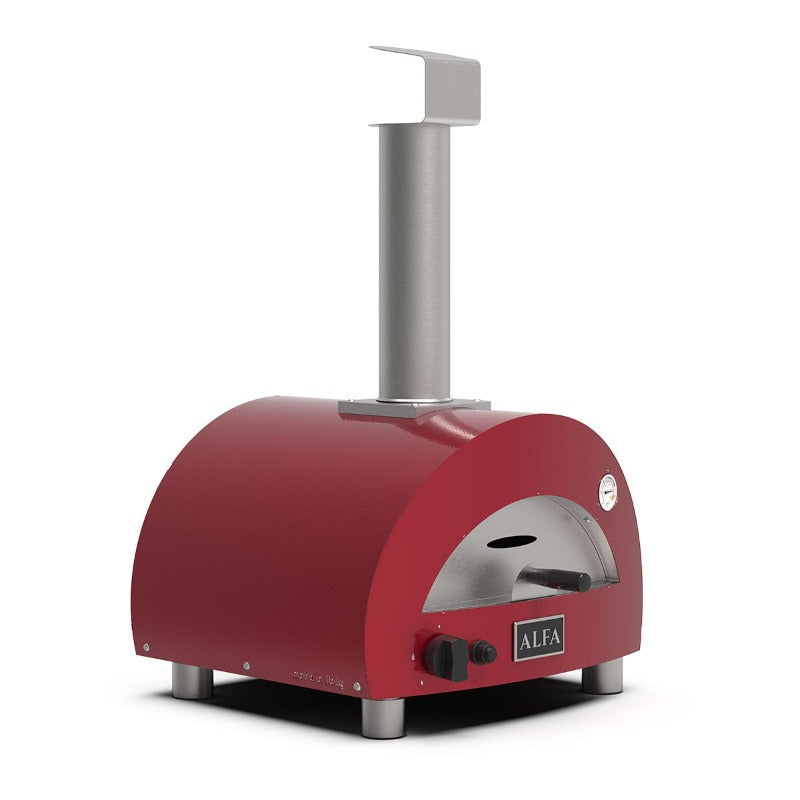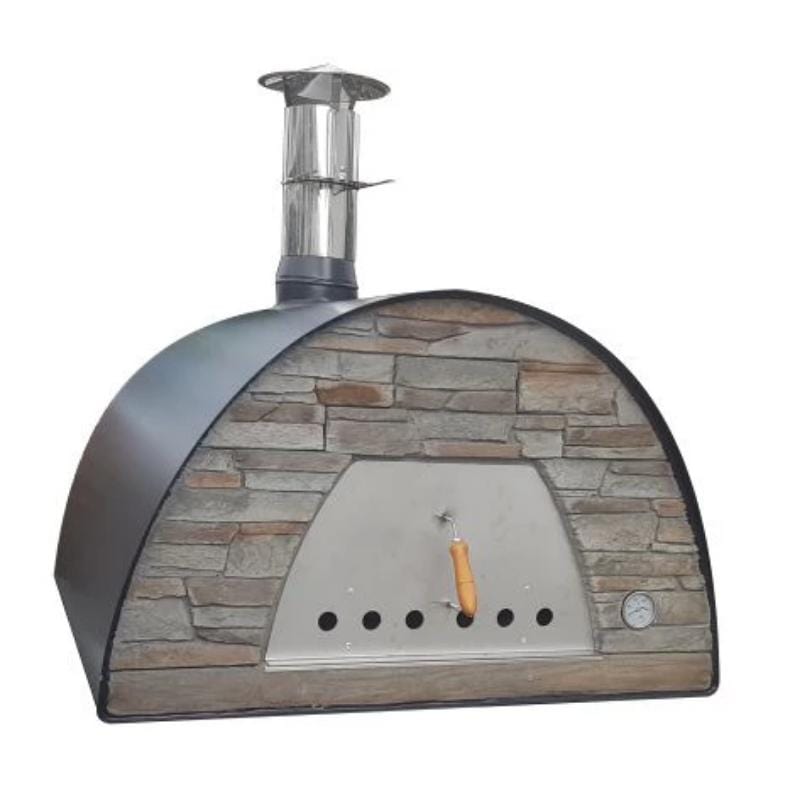Gas pizza ovens are increasingly becoming a staple in commercial kitchens across the globe. As the popularity of pizza continues to rise in various dining establishments—from high-end restaurants to casual diners—choosing the right pizza oven has become crucial. Gas ovens, known for their efficiency and quality, offer distinct advantages. This article delves into the mechanics, benefits, and considerations of using gas pizza ovens in a commercial setting, providing a valuable resource for any culinary professional.

What is a Gas Pizza Oven?
A gas pizza oven operates on natural gas or propane and is designed to bake pizza by producing a consistent baking temperature and environment. Unlike electric or wood-fired ovens, gas ovens offer quick heating times and easier temperature controls, making them ideal for busy kitchens. This section compares these oven types to help clarify why many choose gas over alternatives.
How Does a Gas Pizza Oven Work?
Understanding the operation of a gas pizza oven is key to maximizing its potential:
- Ignition: The oven is powered by igniting the gas, which heats the oven chamber.
- Heating mechanism: Gas burns to heat either a stone bed or a metal chamber, distributing heat evenly.
- Temperature control: Users can adjust the flame to control the temperature, which is crucial for cooking pizza uniformly.
- Cooking process: The oven cooks the pizza by surrounding it with high temperatures, which can be finely tuned for different types of pizza.
What are the Advantages of Using a Gas Pizza Oven in a Commercial Kitchen?
Gas pizza ovens offer several advantages that make them suitable for commercial use:
- Speed of heating: Rapidly reaches cooking temperature, allowing for quicker cooking cycles.
- Consistent temperature control: Provides steady heat, which is essential for evenly cooked pizzas.
- Energy efficiency: Generally uses less energy compared to wood-fired ovens, reducing operational costs.
- Cost-effectiveness: Lower initial investment and maintenance costs. Gas pizza ovens are an ideal addition to any commercial kitchen.
- Easy maintenance and cleaning: Simpler to clean and maintain than wood-fired ovens, saving time and labor.
What Types of Gas Pizza Ovens are Available?
Different settings and volumes require different types of ovens:
-
Deck ovens: Feature a heat source below a stone or ceramic deck. These ovens are excellent for artisanal pizzas.
- Pros: Excellent heat retention, perfect for thick, gourmet pizzas.
- Cons: Requires manual intervention to move pizzas around.
- Ideal usage: High-end restaurants or pizzerias focusing on quality over quantity.
-
Conveyor ovens: Use a conveyor belt to move the pizza through a cooking chamber, ideal for consistent results.
- Pros: High volume output, minimal supervision needed.
- Cons: Less flexibility in cooking times and temperatures.
- Ideal usage: Busy restaurants or food courts where speed and uniformity are key.
-
Countertop ovens: Smaller, more compact ovens that fit in tight spaces.
- Pros: Space-saving, sufficient for low-volume establishments.
- Cons: Limited capacity, not suitable for high demand scenarios.
- Ideal usage: Small cafes or bars with limited menu items.

How to Choose the Right Gas Pizza Oven for Your Kitchen?
Selecting the right oven involves considering:
- Kitchen size and layout: Ensure the oven fits comfortably and functionally.
- Volume of pizzas produced: Choose an oven that can keep up with your demand.
- Budget constraints: Consider both upfront and long-term operating costs.
- Specific features and functionalities: Look for features like adjustable controls, easy-to-clean surfaces, and durability.
What are the Key Features to Look for in a Gas Pizza Oven?
When purchasing a gas pizza oven, consider:
- Temperature range: Adequate for different pizza types.
- Size and capacity: Matches your output requirements.
- Material and build quality: Ensures longevity and consistent performance.
- Ease of cleaning: Facilitates quicker cleanup.
- Brand reputation and warranty: Offers peace of mind with good customer support.
What are the Costs Associated with Gas Pizza Ovens?
Investing in a gas pizza oven involves:
- Average price ranges: Vary widely based on type and capacity.
- Long-term costs: Include maintenance and gas usage.
How to Maintain and Clean a Gas Pizza Oven?
Keeping your oven in top shape includes regular:
- Wiping and scrubbing: Daily cleaning routines to remove food particles and grease.
- Deep cleaning procedures: Periodic intensive cleaning to maintain optimal performance.
- Preventive maintenance checks: Regular inspections to avoid unexpected breakdowns.

What are the Safety Precautions When Using a Gas Pizza Oven?
Safety is paramount, especially with gas appliances:
- Proper ventilation: Ensures fumes are adequately expelled.
- Regular inspection for gas leaks: Prevents potential hazards.
- Safe operation practices: Includes training and adherence to safety protocols.
- Emergency procedures: Prepares staff for potential accidents.
What are the Common Mistakes to Avoid with Gas Pizza Ovens?
Avoid pitfalls such as:
- Overloading the oven: Leads to uneven cooking.
- Neglecting regular maintenance: Shortens the life span of the oven.
- Improper temperature settings: Results in under or overcooked pizzas.
- Ignoring safety protocols: Increases the risk of accidents.
How to Optimize Pizza Quality with a Gas Pizza Oven?
For the best pizza:
- Dough preparation: Key for the perfect crust.
- Temperature settings: Adjust based on crust type and toppings.
- Baking time: Match to pizza size and topping load. Toppings distribution: Ensures even cooking and flavor distribution.

What are the Best Practices for Training Staff on Using a Gas Pizza Oven?
Effective training ensures:
- Initial training sessions: Covers the basics of operation.
- Ongoing training and refreshers: Keeps skills up to date.
- Importance of safety training: Emphasizes accident prevention.
- Encouraging staff feedback: Helps identify areas for improvement.
What are the Benefits of Gas Pizza Ovens Over Other Types?
Comparing gas to other ovens reveals:
- Speed and efficiency: Superior in gas ovens.
- Consistency in cooking: More reliable with gas.
- Operational costs: Generally lower with gas.
- Versatility in menu offerings: Gas ovens accommodate a wider range of pizzas.
Which Brands Offer the Best Gas Pizza Ovens?
Top brands known for quality include:
- Brand reputation: Consider brands well-regarded for durability and performance.
- Customer reviews: Look at feedback from other commercial users.
- Warranty and support: Essential for long-term satisfaction.
What are the Environmental Considerations for Gas Pizza Ovens?
Environmental impact involves:
- Energy efficiency: Opt for models that consume less energy.
- Use of sustainable gas sources: Minimizes ecological footprint.
- Waste management: Incorporates practices to reduce waste.
What are the Alternative Technologies to Gas Pizza Ovens?
Alternatives to consider:
- Electric ovens: Suitable for smaller kitchens or lower volumes.
- Wood-fired ovens: Offer a traditional flavor profile.
- Hybrid ovens: Combine features of gas and electric for flexibility.

Conclusion
Gas pizza ovens are an essential component of modern commercial kitchens, offering unmatched efficiency and control. Whether upgrading your kitchen equipment or setting up a new establishment, understanding the nuances of these ovens will ensure you make the best investment, enhancing both your operations and your culinary creations.











